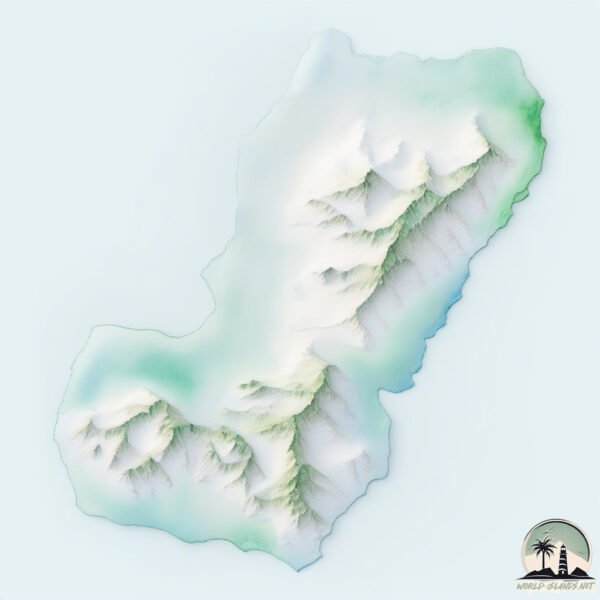Bioko

Welcome to Bioko, a Tropical island in the Gulf of Guinea, part of the majestic Atlantic Ocean. This guide offers a comprehensive overview of what makes Bioko unique – from its geography and climate to its population, infrastructure, and beyond. Dive into the details:
- Geography and Size: Explore the island’s size and location.
- Climate and Weather: Weather patterns and temperature.
- Topography and Nature: Uncover the natural wonders of the island.
- Infrastructure and Travelling: Insights on reaching, staying, and making the most of your visit.
- News and Headlines: Latest News.
Geography and size of Bioko
Size: 1949 km²
Coastline: 233 km
Ocean: Atlantic Ocean
Sea: Gulf of Guinea
Continent: Africa
Bioko is a Very Large Island spanning 1949 km² with a coastline of 233 km.
Archipel: Cameroon Island Chain – A less-known archipelago off the coast of Cameroon, characterized by its biodiversity and cultural richness.
Tectonic Plate: Africa – One of the world’s largest tectonic plates, covering the African continent and parts of the surrounding oceans, known for its stability with some active rift zones.
The geographic heart of the island is pinpointed at these coordinates:
Latitude: 3.49508216 / Longitude: 8.68458789
Climate and weather of Bioko
Climate Zone: Tropical
Climate Details: Tropical Monsoon Climate
Temperature: Hot
Climate Characteristics: Characterized by heavy rainfall, high humidity, and uniformly high temperatures, but with a distinct short dry season. It features a seasonal reversal of prevailing wind directions.
Topography and nature of Bioko
Timezone: UTC+01:00
Timezone places: Europe/Paris
Max. Elevation: 3011 m Pico Basilé
Mean Elevation: 648 m
Vegetation: Evergreen Broadleaf Forest
Tree Coverage: 51%
The mean elevation is 648 m. Dominating the island’s landscape, the majestic “Pico Basilé” rises as the highest peak, soaring to impressive heights. The island is characterized by Mountains: High, steeply elevated landforms. Characterized by both a high maximum elevation (over 500 meters) and a high mean elevation, creating rugged, mountainous terrains on islands.
Dominating Vegetation: Evergreen Broadleaf Forest
Characterized by dense, lush canopies of broadleaf trees that retain their leaves year-round. These forests are typically found in tropical and subtropical regions and are known for their high biodiversity. Bioko has a tree cover of 51 %.
Vegetation: 14 vegetation zones – Exceptionally Diverse Island
Islands with more than ten vegetation zones are among the most ecologically rich and varied in the world. These islands are akin to miniature continents, boasting an incredible array of ecosystems. The sheer range of habitats, from high peaks to deep valleys, rainforests to deserts, creates a mosaic of life that is unparalleled. They are crucial for conservation and ecological studies.
Infrastructure and Travelling to Bioko
Does the island have a public airport? yes.
Bioko has a public and scheduled airport. The following airports are located on this island: Malabo Airport.
Does the island have a major port? yes.
Bioko is home to a major port. The following ports are situated on the island: PUNTA EUROPA TERMINAL, MALABO.
The mean population of Bioko is 186 per km². Bioko is Moderately Inhabited. The island belongs to Equatorial Guinea.
The name of the island resonates across different cultures and languages. Here is how it is known around the world: Arabic: بيوكو; German: Bioko; Spanish: Bioko; French: Bioko; Portuguese: Bioko; Russian: Биоко; Chinese: 比奥科岛
Continuing your journey, Schiess Island is the next notable island, situated merely km away.
Welcome to the Island of Bioko in Equatorial Guinea!



Equatorial Guinea is classified as Least developed region: Countries that exhibit the lowest indicators of socioeconomic development, with the lowest Human Development Index ratings. The level of income is High income: nonOECD.
News – Latest Updates and Headlines from Bioko
Stay informed with the most recent news and important headlines from Bioko. Here’s a roundup of the latest developments.
Social Media Posts about Bioko
Please note: The data used here has been primarily extracted from satellite readings. Deviations from exact values may occur, particularly regarding the height of elevations and population density. Land area and coastline measurements refer to average values at mean high tide.
